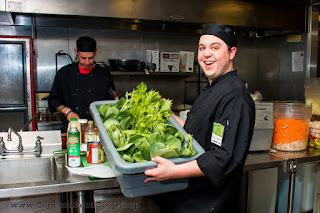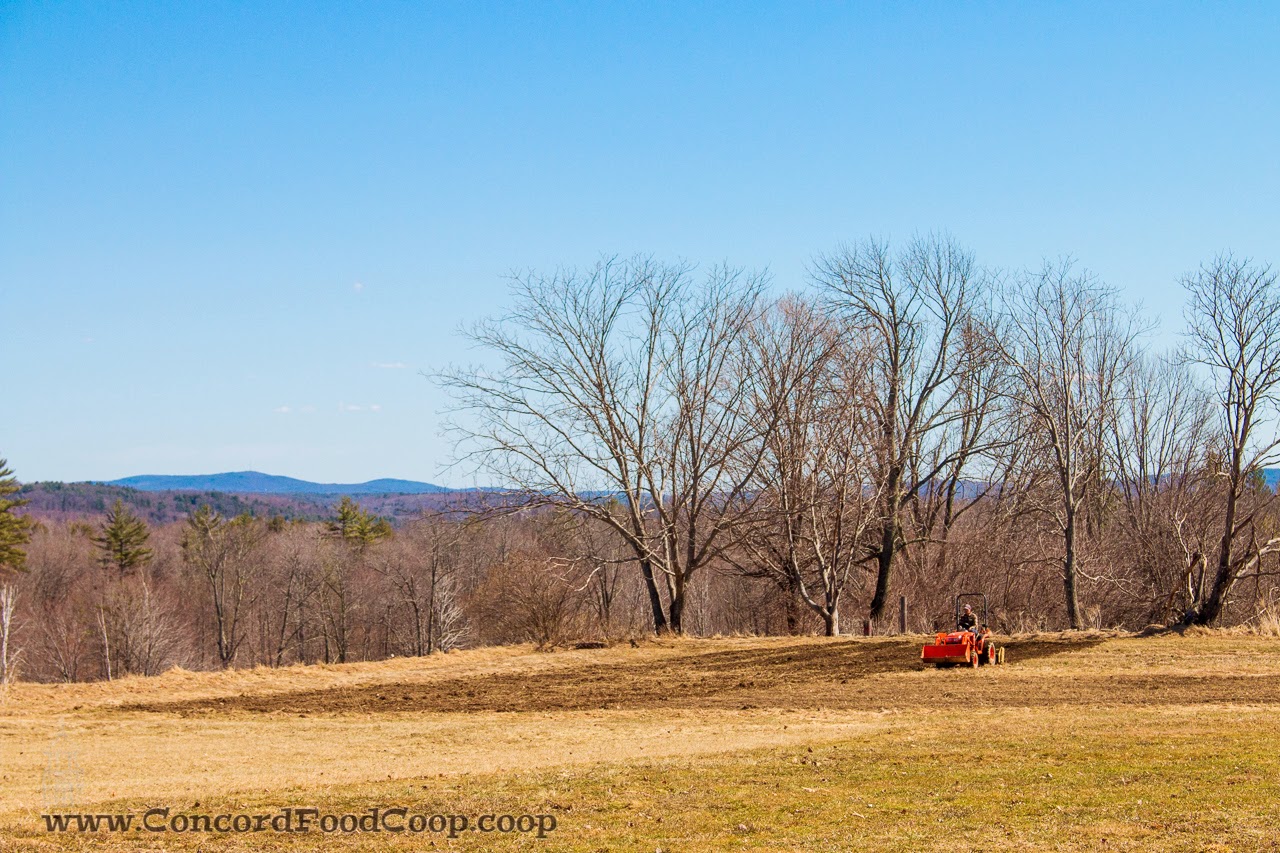I stumbled across an very interesting new method of growing veggie crops, which I have decided to try to incorporate in the gardens here at Shaker Village.
The method is inspired by Jean-Martin Fortier,
reminiscent of the French Intensive methods used in Europe.
The theory goes that by creating permanent raised beds we can
increase production, protect soil integrity and reduce labor and equipment
needs. By raising the beds we aim to protect the soil from compaction, via rain
and snow as well as human and equipment traffic.
In order to accomplish this on already planted and weedy soils, we
first used the tractor mounted tiller to till up the soils, which helped to
loosen them. Key to the second step, which was to then shovel soil from the
areas that are to be paths up onto the beds. After digging down the paths
and building up the raised beds, we leveled them off with rake, spread our own
compost, leveled them again, installed drip irrigation lines, spread newspaper
and then put down mulch hay.
The compost is key as it provides long term nutrients. In an
un-tilled soil, compost and manure can be more effective in that the soil
structure and microorganism populations are maintained, allowing the soil to
stay healthy and better utilize the nutrients that are locked up in the
compost.
Being that it is fall, I chose to layer the tops of the beds with
newspaper to protect the newly loosened soil over the winter from rain and
snow, which cause saturated soils and compaction, which would un-do all the
work.
I wet down the newspaper and then spread hay mulch on top,
essentially just to have something to hold the news paper in place.
Although we do intend to plant strawberries in these beds in the spring so the
mulch will also be useful to suppress weeds. I may use temporary wood chips or
compost if I run out of hay mulch, which can removed or raked into the paths in
the spring at time of planting.
Our new beds are intended to maintained by hand tools, with
occasional shallow walk behind tiller usage if need be to break up dense weeds.
By creating 30" raised beds, we can easily reach across the
entire bed to plant and harvest without over extended ourselves, which is
better for employees and volunteers in the long run.
The deep loose soils of the raised beds allow for more dense
production practices. The roots of the plants have more room to grow down
and therefore can be planted closer together without competing with each
other. In addition, dense plantings more readily out compete weeds
resulting in (hopefully) better growing conditions and less labor.
In the spring, once we have planted the rows, we can use cardboard
or carpeting in the paths to keep weeds out of the aisles during the growing
season.
Here is hoping that our hard work pays off! A big thank you
to Ray and Richard for helping out on a big project!
Stacey




























